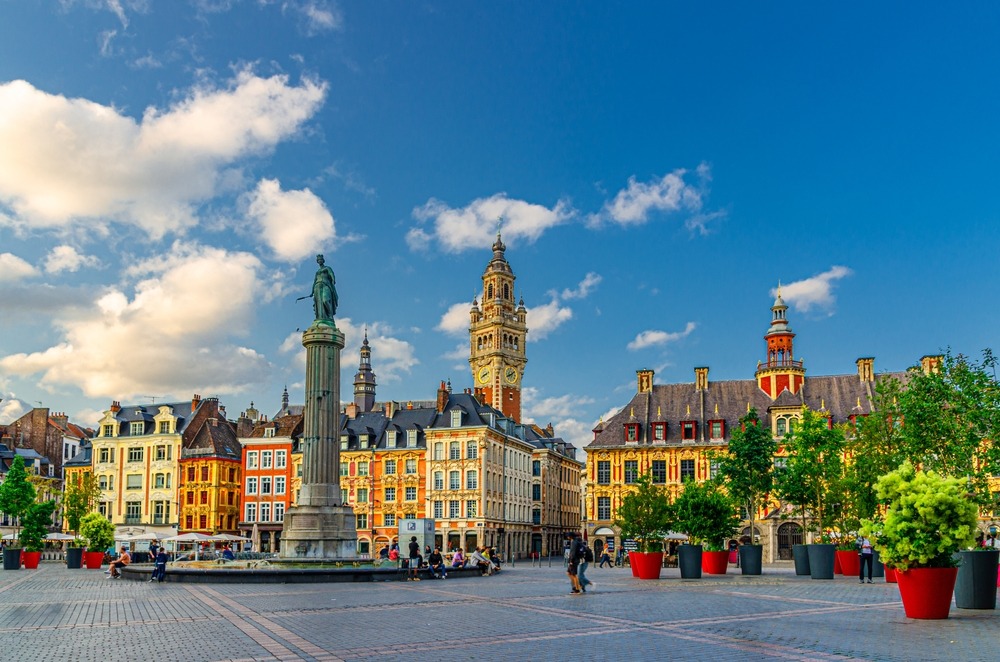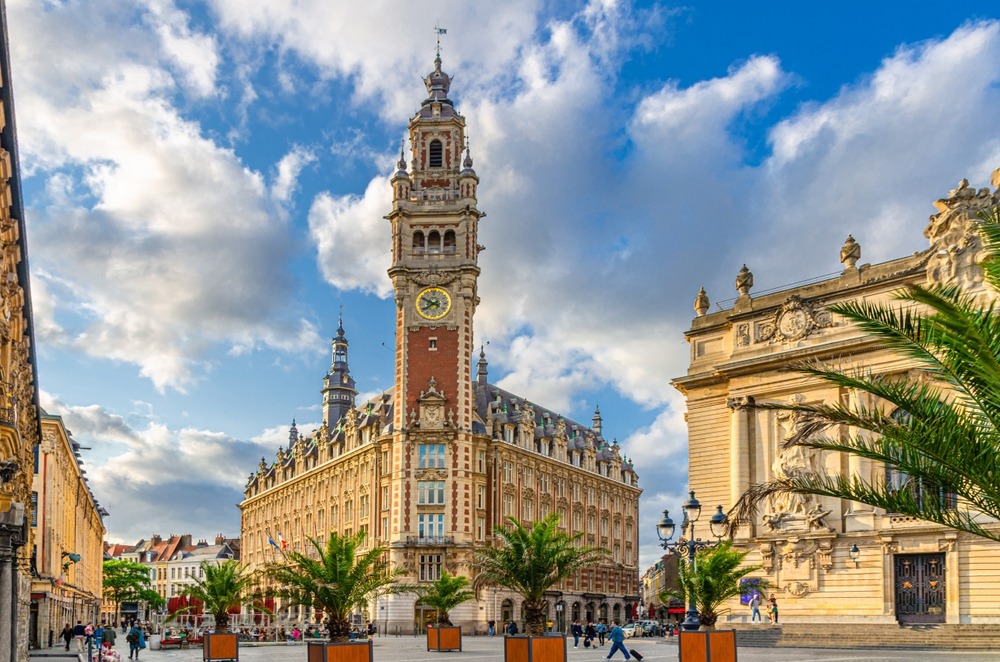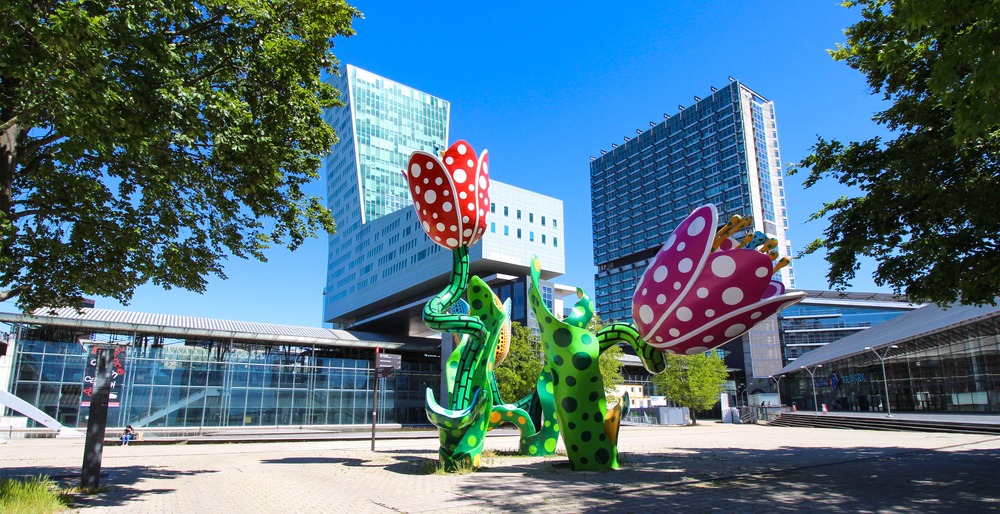The History of Lille, France and Its Top 25 Attractions
Located in the heart of French Flanders near the border with Belgium, Lille is a city that masterfully blends centuries of political intrigue, cultural richness, and architectural splendor. Known for its vibrant spirit, Flemish heritage, and evolving identity, Lille has transformed from a medieval stronghold to a dynamic metropolitan center in northern France. Its unique blend of French and Flemish influences is seen in everything from its cuisine and language to its red-brick architecture and warm hospitality.

The History of Lille
The origins of Lille (Rijsel in Flemish) trace back to at least the 11th century, though the area had been inhabited since prehistoric times. The first documented mention of the city was in 1066, when it was already a strategic settlement along the Deûle River. According to legend, the city was founded by the giant Lydéric, who avenged his father’s murder and built the city on the riverbanks. While this is myth, it reflects the city’s long-standing regional importance.
In the Middle Ages, Lille was part of the County of Flanders and thrived as a center of wool and textile production. It flourished economically and culturally, becoming one of the most important trading cities in the region. The 14th and 15th centuries were marked by prosperity, but also by territorial disputes. Lille came under Burgundian control in 1369 and later passed to the powerful Habsburgs through dynastic marriages.
In the 17th century, during the reign of Louis XIV, Lille was besieged and captured by the French in 1667. The city’s incorporation into France was formalized by the Treaty of Aix-la-Chapelle in 1668. The famed military engineer Vauban fortified the city, adding the Citadel of Lille—now a historic landmark.
Lille endured numerous conflicts, including the Napoleonic Wars and the two World Wars. It was occupied by German forces in both World Wars but played a resilient role in the French Resistance. After the liberation, Lille rebuilt itself and leaned into its industrial strength, especially in textiles, metallurgy, and engineering.
However, like many industrial cities, Lille suffered economic decline in the mid-20th century. Through ambitious urban renewal projects, the city reinvented itself. The opening of the Eurostar rail link and Euralille business district in the 1990s established Lille as a major European crossroads. In 2004, it was named European Capital of Culture—a testament to its thriving art scene, academic excellence, and cross-border spirit.

Top 25 Attractions in Lille
-
Grand Place (Place du Général-de-Gaulle) – The vibrant heart of the city, surrounded by Flemish Baroque buildings, including the ornate Vieille Bourse and bustling cafes.
-
Vieille Bourse (Old Stock Exchange) – A 17th-century architectural gem with a courtyard that hosts second-hand book markets and chess players beneath arcades.
-
Palais des Beaux-Arts de Lille – One of France’s premier museums, housing masterpieces by Rubens, Van Dyck, Goya, and Rodin in a grand 19th-century building.
-
Lille Cathedral (Basilique-cathédrale Notre-Dame-de-la-Treille) – A striking mix of Gothic revival and modern architecture, with an ethereal translucent façade.
-
Citadel of Lille – Designed by Vauban, this 17th-century fortress remains a military site and a masterpiece of defensive architecture.
-
La Vieille Ville (Old Town) – A maze of cobbled streets, colorful Flemish houses, boutiques, and art galleries, rich in historic charm.
-
Rue de la Monnaie – One of the oldest streets in Lille, lined with antique shops, quaint cafés, and preserved townhouses.
-
Hospice Comtesse Museum – Housed in a former medieval hospital founded in 1237, this museum explores the city’s art and daily life through the centuries.
-
Euralille – A modern business and shopping district designed by architect Rem Koolhaas, located near Lille Europe train station.
-
Maison Natale de Charles de Gaulle – The birthplace of the French general and statesman, now a museum devoted to his life and legacy.
-
Lille Zoo – A family-friendly attraction set in a wooded park near the Citadel, home to over 400 animals and focused on conservation.
-
Parc de la Citadelle – Lille’s largest green space, perfect for walking, cycling, and picnicking, with footpaths surrounding the star-shaped citadel.
-
Musée d’Histoire Naturelle de Lille – A fascinating museum displaying zoological, geological, and ethnographic collections.
-
Marché de Wazemmes – One of France’s liveliest open-air markets, offering everything from fresh produce to textiles and international food.
-
Place Rihour – A smaller square that features the Gothic-Renaissance Palais Rihour, which now houses Lille’s tourist office.
-
Saint Maurice Church – A gothic church with soaring arches and stained glass windows, standing as a testament to Lille’s spiritual past.
-
Le Tripostal – A contemporary art space housed in a former postal sorting center, featuring avant-garde exhibitions and cultural events.
-
Lille Opera House (Opéra de Lille) – A neoclassical building with a grand interior, offering opera, dance, and classical music performances.
-
Gare Saint Sauveur – A former train station turned cultural venue with art exhibitions, concerts, and family-friendly events.
-
Le Palais Rameau – A beautiful 19th-century glass-and-iron structure originally built as a winter garden, now hosting events and exhibitions.
-
La Piscine Museum (Roubaix) – Located just outside Lille, this museum is housed in a former Art Deco swimming pool and features fine arts and textiles.
-
Tour de Lille (Lille Tower) – The tallest skyscraper in the city, offering modern architectural contrast and housing corporate offices.
-
Le Nouveau Siècle – Home to the National Orchestra of Lille, this modern concert hall hosts a range of symphonic performances.
-
Les Halles de Wazemmes – A covered market filled with gourmet food stalls, offering local cheeses, charcuterie, and global delicacies.
-
Saint-Sauveur Church – A baroque church rich in history and artistry, often overshadowed by more prominent landmarks but a hidden treasure of the city.

Lille is a city of contrasts and convergence—where medieval streets meet modern skyscrapers, and Flemish gables stand beside French brasseries. Its history is marked by struggle and triumph, war and peace, industry and innovation. Today, Lille pulses with energy, whether through its art galleries, student life, cultural festivals, or culinary delights. Whether you’re wandering the cobbled lanes of Vieux-Lille or exploring contemporary masterpieces in converted warehouses, Lille invites travelers to experience the proud and ever-evolving spirit of northern France.

































